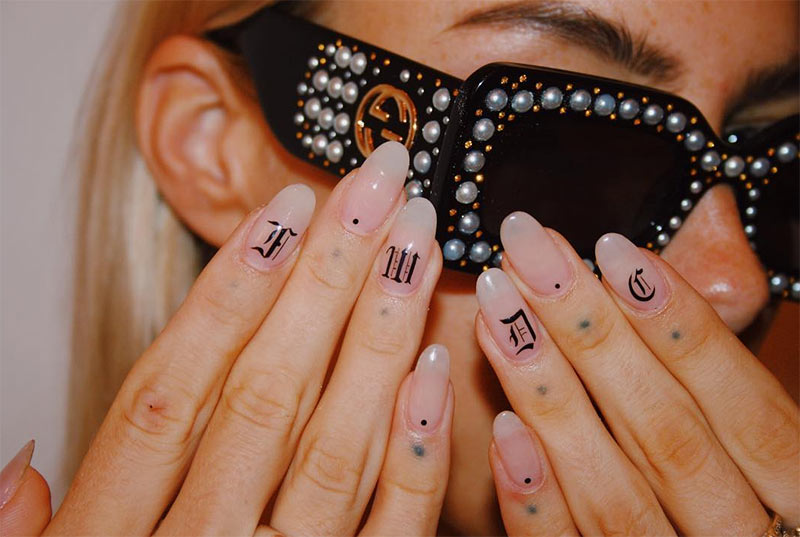Removing fake nails safely and correctly is a bit of a process, but it’s an important one. Nail extensions aren’t as damaging to the nails as many people think. More often than not, any trauma to the nails happens during the removal process if it’s done the wrong way.
At home, it can be tempting to just try and pull the nails off, but that’s just about the worst thing you can do. Many of the hacks you can find on YouTube or TikTok are also very damaging. Instead, follow our process to take off your nail extensions but keep your nails happy and strong.
This method will work with all kinds of nail extensions, including acrylics and sculpted gel, so don’t worry if you can’t get back to the salon for professional removal. You can do this from the comfort of your own home, with your favorite TV show on in the background.
In this article:
What You’ll Need to Remove Fake Nails Safely
Before you start trying to get your fake nails off, you need to make sure you have all the necessary tools for the process. Here are the basic essentials:
Removing Nail Extensions at Home
Once you have everything ready, follow the steps below to remove your nail extensions without causing any damage to your natural nails.
- File Down or Clip the Tip
Once you’re ready to start the removal process, your first step is to remove the tips. If your extensions are medium-length, you can just file them down with the most textured side of your nail file. This will be the gentlest option that’ll put the least amount of pressure on your natural nails.
If your nail extensions are very long, you can save yourself some time by clipping off the tips instead. A toenail clipper is actually great for this since it’ll be stronger than a typical nail clipper.
Improper clipping can pull on the nail bed a little bit, so here’s how to do it gently. Never clip the tip in one go, creating a straight line, as that’s just too much pressure all once. Instead, clip twice, holding the clipper on an angle as though you’re trying to clip your extensions into a pointy stiletto. This redirects the pressure and breaks off the tip more gently. You can even clip in many small, rounded motions if you want to be extra gentle.
- File Down the Surface of the Extension
Once your extensions are clipped, you now need to deal with their surface. Your nail extensions are probably covered in some sort of protective polish or topcoat, and you need to break that down so that the acetone can penetrate inside them.
Using the roughest grain on your nail file, file over the surface of the nail extension. You may want to put on a face mask since this can get a little dusty. You’ll want to do this until the entire surface of the nail extension loses its sheen and looks properly filed, which will take at least a minute or two per nail.
You can actually remove the entire extension just by filing (this is what many salons do, just using an electronic file). However, we don’t recommend doing it at home if your nails are brittle since you can accidentally file your actual nail plate.
- Do an Acetone Soak
Next, you’ll want to soak your nail extensions with acetone, so you’ll also need your foil and cotton balls. Acetone is a strong solvent that can even break down acrylics, although it’s a slow process.
If you haven’t done so yet, tear the foil into strips that you’ll be able to wrap around your nails. Then, soak a cotton ball in acetone, place it over the nail extensions. Before any acetone has a chance to evaporate, wrap your fingertip with foil. The foil will prevent the acetone from evaporating, guaranteeing that it seeps in and saturates the acrylic.
Once you’ve done this to all of your nails, wait for around 12-15 minutes.
- Pry a Little
Once enough time passes, remove the first foil tip and cotton ball, and check on your extension. It may simply pop off as you do this. If it doesn’t, use a cuticle pusher to gently pry at the bottom of the extensions, near the base of the nail. Never attempt to pull on the extensions from above!
Your nail extensions should slide off easily, so you can repeat the process with the rest of your nails.
If pushing with the cuticle pusher doesn’t immediately remove the extension, soak your cotton ball with a bit more acetone and wrap it up again for 3 more minutes or so. With enough time soaking, the extensions will eventually slide off.
- Do Some Buffing
Even once all of your extensions are removed, there is still a little more work to do! There might still be some glue, base coat, or residue on your nail plate that you need to remove. A lot of it might come off with a bit of pushing with your cuticle pusher.
Whatever doesn’t can be buffed away with one of the finer grains on your nail file. Buff your nail plate gently until all of the residue is gone but without damaging your natural nails.
- Give Your Nails Some TLC
That’s it! Your nails will probably feel a little dry from all of the acetone, so you’ll need to bring them back to life. You can rinse any dust or acetone remnants from your hands and finish off with a healthy layer of cuticle oil or thick hand cream to restore some much-needed moisture. Finally, you can also add a layer of nail strengthener to further protect your nails.

Fake Nail Removal Dos & Don’ts
We’ve explained the fake nail removal process in its entirety, but we have a few extra tips and reminders to make sure to keep your nails healthy.
- If you live in a very cold climate, consider warming up your acetone first by placing the bottle in a hot water bath. This will help it work quickly, so you don’t have to sit with your nails soaking for too long.
- Always remember to avoid pulling on your nail extensions. If, at any point in the process, you feel like you need to pull, it just means you either haven’t filed or haven’t soaked your extensions enough.
- Don’t trust the strange hacks on the Internet! There are videos online of people removing their nail extensions with floss, but just like pulling on the nails, this can be very damaging.
- If your skin is dry, you can actually apply some hand cream or even Vaseline only to your nail bed (careful not to get it on your nails) before starting the entire process to protect your skin and cuticles from the acetone.
Photos via @imarninails, Instagram





